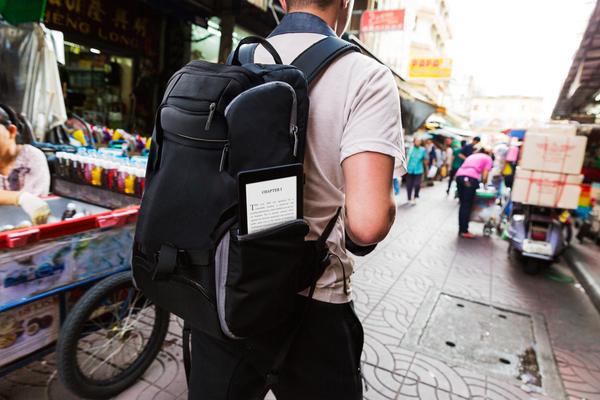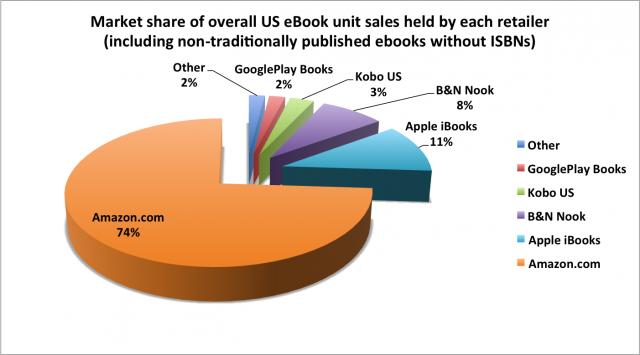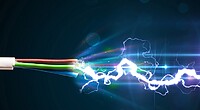
Amazon first released the Kindle e-reader in 2007 and it changed the way we embrace the written word. It has been accused of being unwieldy, with a split keyboard and an asymmetrical layout that favored only the right hand. It was a strange and strangely compelling object. Its ad-hoc angles and bland beige color conjured a 1960s sci-fi futurism. We were in love.
The Kindle set the imagination alight. It looked and felt like no ‘computer’ we had ever seen. And because its progenitor was paper – but yet it was digital – there was something magical in holding it. It was The Hitchhiker’s Guide made manifest. Unlike a desktop – at which we read straight-backed, vertically, some distance away from the text – we could cradle a Kindle. And because it was globally networked and backed by a vast and instantaneously available library, we rarely found it to be limited.
The Kindles greatest strength was was closing the distance between wanting a book and owning it. When travelling, no matter how desolate the location, we could rely on the instantaneous deliverance via Whispernet, and to the this day still one of the most innovative and forward‑thinking qualities of the Kindle platform.
The Amazon Kindle certainly isn’t perfect but over the years each subsequent release was a significant improvement on the previous generation. Kindles became smaller, lighter, with higher resolution and more responsive front-lit screens. The tactility of the page-turn buttons improved. The battery lasted longer. And the device got cheaper. So cheap it inspired non-profits such as Worldreader to form and begin building digital libraries in Africa.
One of the primarily drawbacks of the Kindle ecosystem is that buying e-Books are so effortless, it can be easy to forget about your purchases. According to a number of researchers 40-45% of all purchased books are never even opened.
Our forgetfulness on what books we own can be primarily attributed to the Kindle’s interface. It makes it difficult to keep tabs on those expanding digital libraries: at best, we can see a dozen titles at a time, all as inscrutably small book covers. Titles that fall off the first-page listing on a Kindle cease to exist. Compare that with standing in front of a physical bookshelf: the eye takes in hundreds of spines or covers at once, all equally at arm’s length. I’ve found that it’s much more effortless to dip back into my physical library – for inspiration or reference – than my digital library. The books are there. They’re obvious. They welcome me back.
The pile of unread books we have on our bedside tables is often referred to as a graveyard of good intentions. The list of unread books on our Kindles is more of a black hole of fleeting intentions.
When we buy a physical book, we can do with it what we want – cut up the pages, burn it for warmth, give it to friends, and so on. Because the contract of ownership between reader and object is implicit, not dependent on any third party, the physical book also becomes a true souvenir of the reading experience. One that can’t be revoked because of broken or neglected software. In effect, a longterm trust is embedded in the nature of a physical book. This is not the case with Kindle Books, we never truly own the book we are purchasing, we are merely renting them.
In the last few years the entire e-reader and e-book industry has experienced massive upheaval, due to the success of Amazon and our love of the Kindle. The Sony Reader Store was closed last May. Diesel e-Books, Txtr, Scholastic Storia and Blinkbox Books have all shut down.

In the US, more than 95% of all consumer e-Book purchases — and probably closer to 99% of them — go through just five major retailers. Amazon currently enjoys 74% of all US e-Book purchases and 71% of all US consumer dollars spent on e-Books. The Apple iBooks store, accounts for roughly 10-12% of US e-Book sales — or a third of what’s left. After iBooks comes Barnes & Noble’s Nook which despite its steepening downward slide over the past two years, still remains the number three e-Book retailer with about 7-8%. Kobo only accounts for half of Barnes and Nobles digital sales, which is around 3-4% of the total US market.Google Play Book has the smallest market share, making up 1-2% of today’s e-Book market.
The way we consume media changes over time. Granite, wood, wax, silk, paper, metal type, the Gutenberg press, Manutius’s octavo editions, Penguin paperbacks, desktop publishing software, digital type, on‑demand printing, .epub: the evolutionary path of ‘books’ has been punctuated by technological changes large and small. The Kindle is our current current love affair, but is it fleeting, like teen love or endearing for all time?
Michael Kozlowski is the editor-in-chief at Good e-Reader and has written about audiobooks and e-readers for the past fifteen years. Newspapers and websites such as the CBC, CNET, Engadget, Huffington Post and the New York Times have picked up his articles. He Lives in Vancouver, British Columbia, Canada.
